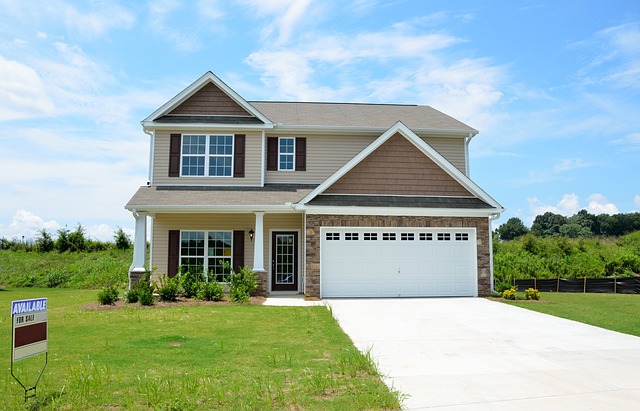 With the sometimes high cost of buying and maintaining a home and the concept of being sustainable becoming more popular, many people are considering moving to a smaller home to minimize their impact. It’s important, however, to consider what living small is really like before deciding that it’s the right move for you.
With the sometimes high cost of buying and maintaining a home and the concept of being sustainable becoming more popular, many people are considering moving to a smaller home to minimize their impact. It’s important, however, to consider what living small is really like before deciding that it’s the right move for you.
If you’re curious about life on a smaller scale, here are some things to contemplate beforehand.
Getting Rid Of The Excess
It’s just a fact that a smaller amount of space means a smaller amount of stuff, but many people don’t realize this works two ways. While you won’t be able to accumulate the same amount of stuff in a smaller home, you also won’t have the luxury of being able to take everything from a larger house with you. It may not be a big deal for you to pack things away or discard the old, but if you’re the type of person who likes stuff, you may want to re-consider micro.
Will You Miss The Space?
Many homeowners spend a lot of time outdoors or even traveling for work, so the size of their home may not matter that much. However, if you’re the kind of homeowner who loves to nest and have their space, the idea of lounging around a small home may not be for you. A micro-sized space can minimize costs and be easier to decorate, but if you like being able to spread out and luxuriate in a variety of surroundings, something undersized can be quite limiting.
Forget The Home Maintenance
Whether you live on a massive estate or in a studio apartment, there are minor things that need to be done to keep your space clean and clutter free. When it comes to smaller living though, there will be a lot less to do, and this can greatly impact your free time. It’s great if you’re the kind of person who has plenty of hobbies to keep them busy, but if you like taking care of the yard and doing an assortment of home maintenance duties, it may be a struggle to own a property that needs less tending.
It’s never been more popular to go ‘micro’ when it comes to home ownership, but it’s important to make sure small living is right for you before taking the leap. If you are currently in the market for a ‘micro’ home or any other type of property, be sure to contact your trusted real estate professional.
 Your carbon footprint is the measure of your impact on the earth’s natural resources. This number describes the amount of fossil fuel it takes to support your lifestyle. In the United States, each person produces an average of 19.78 tons of carbon dioxide every year. A high carbon footprint means your daily habits are a quickening drain on our finite resources.
Your carbon footprint is the measure of your impact on the earth’s natural resources. This number describes the amount of fossil fuel it takes to support your lifestyle. In the United States, each person produces an average of 19.78 tons of carbon dioxide every year. A high carbon footprint means your daily habits are a quickening drain on our finite resources.  Your home is likely your largest investment. Beyond repairs and regular maintenance to keep it clean, comfortable, and safe, there are a number of projects that can increase the resale value of your property. These renovations top the list of changes you can make that positively impact your home’s value.
Your home is likely your largest investment. Beyond repairs and regular maintenance to keep it clean, comfortable, and safe, there are a number of projects that can increase the resale value of your property. These renovations top the list of changes you can make that positively impact your home’s value. Last week’s economic news included readings on new home sales, construction spending, and housing starts. Data on building permits was released along with Labor Department reports on public and private-sector jobs and the national unemployment rate. Weekly readings on mortgage rates and new jobless claims were also released.
Last week’s economic news included readings on new home sales, construction spending, and housing starts. Data on building permits was released along with Labor Department reports on public and private-sector jobs and the national unemployment rate. Weekly readings on mortgage rates and new jobless claims were also released. Hunting for your new home can be a confusing process. There are countless factors you need to take into account to ensure your new location fits your family’s lifestyle and preferences. In their excitement, first-time home buyers can easily overlook some essential points about their potential property.
Hunting for your new home can be a confusing process. There are countless factors you need to take into account to ensure your new location fits your family’s lifestyle and preferences. In their excitement, first-time home buyers can easily overlook some essential points about their potential property. Having an excellent credit score is very useful. The following are some tips on how to maintain a superb credit score.
Having an excellent credit score is very useful. The following are some tips on how to maintain a superb credit score. There are so many ways in which you can green up your home and make it more sustainable these days. Many people are considering tankless water heaters. While this can certainly be the right option depending on the space you have and the type of water you use, here are some things to consider before you decide to invest in the switch.
There are so many ways in which you can green up your home and make it more sustainable these days. Many people are considering tankless water heaters. While this can certainly be the right option depending on the space you have and the type of water you use, here are some things to consider before you decide to invest in the switch. From a sophisticated couch to a stunning art print, there are plenty of ways that you can dress up your living room and instantly change its vibe. You may not realize it, but wallpaper is back in fashion and becoming another popular way to instantly revamp a room.
From a sophisticated couch to a stunning art print, there are plenty of ways that you can dress up your living room and instantly change its vibe. You may not realize it, but wallpaper is back in fashion and becoming another popular way to instantly revamp a room. Last week’s economic reports included readings from Case-Shiller Housing Price Indices and Commerce Department reports on housing starts and building permits issued.
Last week’s economic reports included readings from Case-Shiller Housing Price Indices and Commerce Department reports on housing starts and building permits issued. The success of your real estate ventures depend on your ability to navigate the financial world. Learn these terms to make it easier to understand what’s going on with your real estate investments.
The success of your real estate ventures depend on your ability to navigate the financial world. Learn these terms to make it easier to understand what’s going on with your real estate investments.